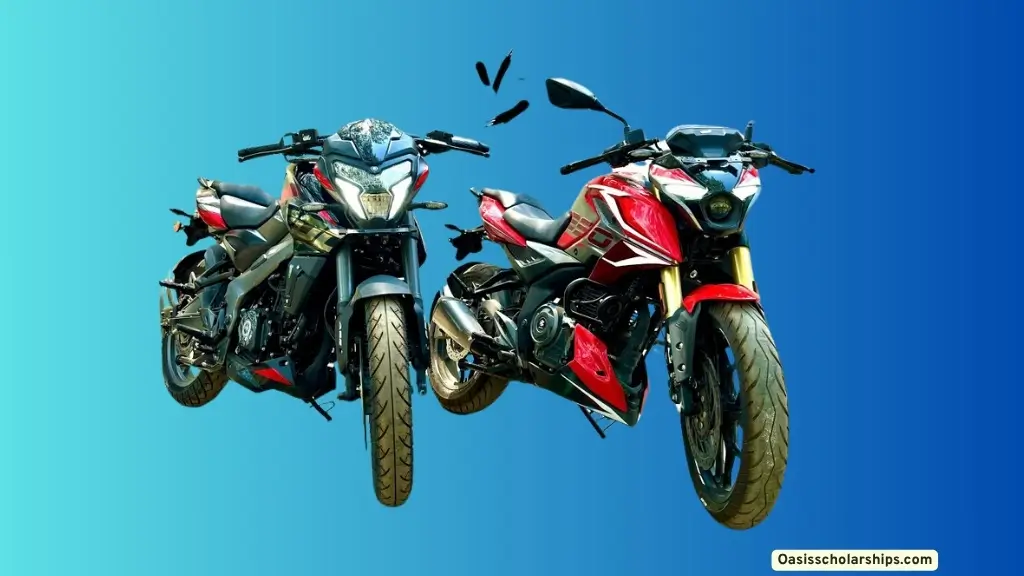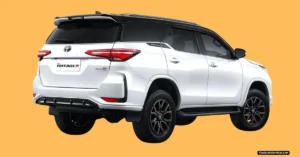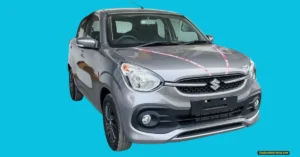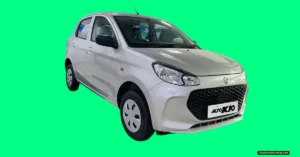Choosing between two great bikes isn’t easy, especially when both come from Bajaj’s trusted Pulsar range. For 2025, the showdown is between the all-new Pulsar N250 and the updated Bajaj Pulsar NS200. Both bikes promise strong performance, sharp looks, and modern features.
But which one is best for you? In this detailed comparison, I break down every important aspect: from engine specs and design details to comfort, performance, and ride feel. If you’re considering either bike, there’s a lot here you shouldn’t miss.
First Look: Pulsar N250 vs NS200 Side by Side
Standing next to each other, the Pulsar N250 and NS200 grab attention right away. The N250 feels a bit more muscular, while the NS200 carries its classic sporty flair.
- N250 Weight: 166 kg
- NS200 Weight: 158 kg
The NS200 is a touch lighter, which matters if quick handling or nimbleness is your priority. Both bikes have nearly 250cc engine capacity, designed for those who want both style and substance in their ride. Even with similar engine sizes, the riding experience is actually quite different—let’s see why.
Head-to-Head: Design & Aesthetics
When I look at the N250 from the front, the aggressive lines and transformer-inspired face stand out instantly. The premium graphics add more attitude, and the projector headlamp shines bright, literally and figuratively. Upside-down forks (37 mm) give it a premium, modern look, with a front tire size of 110/70 on 17-inch wheels.
Meanwhile, the NS200 has a bulkier stance. Its lighting setup isn’t as sharp: no projector lamps, just standard headlights. The same upside-down forks hold the front, but its front tire is 100/90 on 17-inch wheels—slightly slimmer than the N250. Here, you’ll notice the Kanika 300 AA disc brake caliper, a nice touch for strong stopping power.
Quick Design Specs Comparison:
| Feature | Pulsar N250 | Pulsar NS200 |
|---|---|---|
| Weight | 166 kg | 158 kg |
| Front Suspension | 37 mm USD forks | 37 mm USD forks |
| Front Tire | 110/70, 17-inch | 100/90, 17-inch |
| Headlights | Projector lamp | Standard light |
| Calipers | Premium | Kanika 300 AA |
Rear Design and Lighting
Moving back, the N250 uses an LED taillight with a crisp, stylish pattern. Its rear tire measures 140/70 on a 17-inch rim, offering a wider footprint for more grip, helped by an adjustable monoshock setup.
The NS200 also comes with an LED taillight, though the signature is different. The rear tire here is 130/70 on 17 inches, a bit slimmer but still offers a solid grip. Both bikes play it safe with options like mudguards and tire huggers.
Seating and Comfort
Comfort and purpose set these two apart. The N250’s seat is well-cushioned and noticeably comfortable, perfect for daily commutes or longer trips. The seat height is 795 mm, which lets most riders plant their feet easily.
The NS200’s seat is firmer and tailored for a sportier, racing posture. It’s a touch taller at 805 mm. This makes the NS200 better suited for sporty riding, while the N250 is perfect if you care about all-day comfort.
Engine and Performance: Where It Counts
Let’s compare what powers these bikes—here’s where things get interesting:
Pulsar N250
- 250cc, 2-valve engine
- 5-speed gearbox
- Oil-cooled (no liquid cooling/radiator)
- 24 BHP peak power
- 24 Nm peak torque
Pulsar NS200
- 199.5cc, 4-valve engine
- 6-speed gearbox
- Liquid-cooled (with radiator)
- 24 BHP peak power (same as N250)
- 18 Nm peak torque
Valve count and gearbox make a big difference. The N250’s 2-valve setup is straightforward, pairing with a 5-speed box. The NS200, with its 4-valve, 6-speed transmission and liquid cooling, is aimed at riders who want smoother high-rev riding or better highway manners.
Cooling Differences
- N250: Oil cooling only. No radiator. Easier to maintain, fewer things to go wrong, but can run hotter in traffic.
- NS200: Liquid cooling system with radiator. Keeps the engine temps in check during long rides or heavy traffic, ideal for spirited or extended riding.
City and Highway: Which Bike Is Better?
The N250’s higher torque makes it snappier off the line—great for stop-and-go city life or overtakes. If quick acceleration and a stronger low-end punch matter to you, the N250 wins here.
The NS200’s smoother clutch, extra gear, and liquid cooling favor longer rides or highway runs. If your day includes lots of gear changes and you want that sixth gear for smooth cruising, this one delivers.
City vs Highway: Quick Pros and Cons
N250
- Pros: Higher torque for quick acceleration, cushioned seat for comfort, and assist and slipper clutch for easier downshifts.
- Cons: Only 5 gears, could heat up in traffic since it’s just oil-cooled.
NS200
- Pros: 6-speed transmission, stays cool with liquid cooling, split handlebar for aggressive stance.
- Cons: Less torque, firmer seat, lacks assist and slipper clutch.
Engine Features & Tech
NS200’s Instrument Cluster:
- Gearshift indicator
- Turn-by-turn navigation
- Rain, Urban, Off-road modes
- USB charging socket
- ABS and necessary warning lights
- Power indicator and RPM bar up to 12,000
Missing: Assist and slipper clutch
N250’s Features:
- Everything from the NS200, plus:
- Traction control system (TCS)
- Assist and slipper clutch for smoother shifts
- Engine kill switch, self-start, and ergonomic controls
Both meters are digital and intuitive, showing real-time stats, RPM, modes, and trip meters.
Handling, Controls, and Instrument Cluster
The NS200 has a split handlebar, giving it a sporty stance. Buttons are well-placed, with controls for modes, turn signals, self-start, and lighting. It’s designed for aggressive riders who want more control when cornering hard or riding fast.
The N250 goes for a single handlebar. This makes it easier to handle in the city and more comfortable for everyday riders. The layout here is focused on practicality—easy access to turn signals, kill switch, mode buttons, and USB charging.
Instrument Panel Features
Both bikes’ digital instrument clusters offer:
- Real-time speed, power, and RPM up to 12,000
- Turn-by-turn navigation and trip info
- ABS, engine check, and other standard indicators
But the N250 adds:
- Traction control indicator and settings
This little addition can mean a lot when it comes to tricky road conditions, especially in the rain.
Fuel Tank Capacity and Mileage
When I check the tanks, the N250 stands out:
- N250: 14-liter fuel tank. Big, chunky, and made for long-distance rides with fewer stops.
- NS200: 12-liter fuel tank. Still respectable, but you’ll need to refill sooner if you ride a lot.
Mileage Numbers
- N250 City Mileage: Tested at around 39 km/l (kilometers per liter)
- NS200 Claimed Mileage: Between 33 and 35 km/l by most customers
Why the difference? The NS200’s liquid-cooled, 4-valve engine is tuned more for performance than pure efficiency, while the N250’s setup finds a better balance.
Tires, Suspension, and Braking
- Front (N250): 110/70, 17-inch wider for extra grip
- Front (NS200): 100/90, 17-inch
- Rear (N250): 140/70, 17-inch again, wider for more contact
- Rear (NS200): 130/70, 17-inch
Suspension
Both bikes rely on upside-down 37 mm front forks and adjustable monoshock in the rear. The ride quality is nearly the same, handling bumps and turns with ease.
Braking
- N250: Front disc brakes with premium calipers; rear disc setup.
- NS200: Front disc (Kanika 300 AA caliper); rear disc.
Both bikes feature full disc setups, giving riders strong, consistent stopping power.
Specs Overview:
- Tires: Wider on N250, slightly narrower on NS200
- Suspension: Upside-down forks and mono-shock (similar quality)
- Braking: Both have strong, effective disc brakes
Accessories & Extra Features
- Both offer a USB charging socket for phones and gadgets.
- Exhausts: The NS200 opts for an underbelly exhaust, while the N250 uses a visible, more traditional side exit pipe.
- Standard accessories: Mudguards, tire huggers, and turn signal setups are present on both.
- Assist and slipper clutch: Only in N250; NS200 goes without. This means smoother and safer downshifts with less effort on the N250.
- Traction control: Again, only on the N250.
- Modes: Both give options for rain, urban, and off-road modes.
At-a-Glance: Full Comparison Table
| Feature | Pulsar N250 | Pulsar NS200 |
|---|---|---|
| Weight | 166 kg | 158 kg |
| Engine Type | 2-valve, 250cc | 4-valve, 199.5cc |
| Power | 24 BHP | 24 BHP |
| Torque | 24 Nm | 18 Nm |
| Transmission | 5-speed | 6-speed |
| Cooling System | Oil-cooled | Liquid-cooled |
| Fuel Tank Capacity | 14 liters | 12 liters |
| Mileage (city) | 39 km/l | 33-35 km/l |
| Seat Height | 795 mm | 805 mm |
| Front Tire | 110/70, 17″ | 100/90, 17″ |
| Rear Tire | 140/70, 17″ | 130/70, 17″ |
| Suspension | 37 mm USD forks | 37 mm USD forks |
| Rear Suspension | Monoshock adjustable | Monoshock adjustable |
| Braking | Premium caliper | Kanika 300 AA caliper |
| Traction Control | Yes | No |
| Modes | Rain, Urban, Offroad | Rain, Urban, Off-Road |
| USB Charging | Yes | Yes |
| Assist/Slipper Clutch | Yes | No |
Conclusion:
After riding and comparing everything from looks and performance to comfort and features, here’s what I think. The Pulsar N250 is the better pick if you want a wider tire for grip, a bigger fuel tank for longer rides, plush seating, and more torque for city life. The traction control and assist clutch make it even easier to ride day-to-day.






